Golf Inventor's Spotlight from the 2015 PGA Show
1/30/2015 | by Corey Ross of AmateurGolf.com
see also: Equipment Reviews

Golf with arrows, a stand to support your wedge or putter and a way to build a better bunker – these were a few of the ideas hoping to make it big in Orlando
Far removed from the cathedral-like booths of the industry leaders, and located closer to the loading dock and the portable gyro stand in Orlando’s massive Orange County Convention Center, you’ll find the more modest set ups of the would-be Thomas Edisons of the show.
This is the Inventor’s Spotlight Pavilion sponsored by the United Inventors Association of America.
Besides its ability to grow or contribute positively to the game, a product must meet three criteria to quality for the Inventor’s Spotlight:
- The product can’t currently be for sale or be distributed.
- No orders for future sale or delivery are allowed.
- No more than two samples of the product are allowed.
For most, these inventors are making the
biggest investment in their new business date,
hoping to be noticed and gain a foothold in the
industry. Here are three of their stories.
AeroGolf
She wore an archer’s outfit. He sported a
tuxedo. They both held crossbows. More than a
fashion statement, this was symbolism. “The
marriage of archery and golf,” explained
AeroGolf co-founder Victor Bond, a former marketing
director at IBM.
Bond and wife Judith Kunzle, the archer, decided
to bring their idea from Hawaii to the mainland on a
whim, committing just six weeks before the show.
The idea for AeroGolf is pretty straightforward:
It’s archery applied to golf. Replace clubs
with a crossbow and balls with arrows and there you
have it. The arrows in this case have ball-shaped
tips and are thus blunted, but Bond still
doesn’t want you pointing them at anyone.
The target is the green, where rings are placed or
painted around the flag to represents putt. Your
drives to that point are arrows as well, weighted
and contoured for certain shot types such as against
or with the wind. Pulling back the bow is a bit like
the clock system for a wedge – length determines
distance. “She can send a good drive over 200
yards,” Bond said, pointing to his wife.
“And it’s straight!”
Bond is an avid golfer and both are amateur
archers. It was Judith’s idea to combine the
two. And Victor says the idea just made sense to
him. “And then we spent about two weeks
trying to talk each other out of it,” he says,
“but it just made even more sense over
time.” Bond says the sports have much in
common (precision, arc of shot, etc.) and it’s
time for them to share common ground – the golf
course – at a time when golf is actively seeking
alternatives. “And the best thing is that
courses don’t have to change their set up at
all to do this,” he says, “and it causes
no damage to the property.”
Moreover, courses that currently close for as
much as six months during the winter can host this
year-round. Bond says the game at least two big
advantages over golf: It’s easier and more
affordable (arrows cost about $25-$35; a bow is
around $250).
“It inhibits the difficulty of golf and
combines the social element,” he says.
“When you’ve seen disc golf, foot golf
and Fling Golf, what golf course operator
wouldn’t do this?” Before you dismiss
AeroGolf, or don’t think it’ll ever
come to a course near you, know this: The demo
tournament for the game is being held at Mauna
Kea, one of the top-ranked courses in Hawaii. The
tournament is taking place Feb. 14.
“Valentine’s Day. Cupid’s
arrows. We couldn’t help ourselves,”
Bond says.
Capillary Concrete
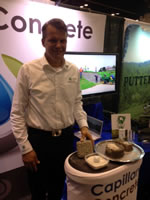 |
Martin Sternberg of
Capillary Concrete |
If Martin Sternberg has his way, bad lies in
bunkers will soon be a thing of the past on the golf
course. Sternberg, a course superintendent, regards
bad lies as a product of poor bunker
construction or material, in particular by creating
bunkers that don’t drain properly.
Sternberg’s product, Capillary Concrete, a
sustainable concrete approved for wetlands,
eliminates that by facilitating proper bunker
drainage. Sternberg came to the PGA Show to get his
product in front of PGA professionals, the people
who care most about bad lies on the course.
“Moisture levels are a lot of what causes bad
lies,” he says. “Some sands are better
and some are worse in dry condition, but with the
correct moisture levels all sands hold the ball
better. We’ve invented a way to move
moisture two ways in the bunker.”
Sternberg’s product facilitates water
movement in both wet and dry conditions to
maintain consistent bunker conditions. Having
playable bunkers, Sternberg says, is huge for
keeping courses hospitable to amateurs. “A
plugged lie penalizes an amateur player a lot more
trouble than a professional. For the amateur it
makes a big difference, with less enjoyment and
slower play as a result.” Sternberg says he
used to use actual concrete to create the base in his
bunkers. Then he had a revelation one day while
pouring. “The concrete kept the moisture
from moving up,” he says. “I realized
we wanted the water to move so we started
experimenting with polymers.”
Sternberg says the end result is a product that can make a huge difference to the playability of a course. “You want to create the perfect lie. That’s key.”
The Putter Buddy
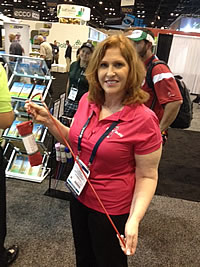
|
Tiger Berge shows off
the Putter Buddy |
This was the story I was expecting to find going
in: Someone who had a prototype in their garage
and finally decided to see if it could make money.
That’s the story of Putter Buddy. Founder
Robert Campos lost a wedge on the course around a
green and was determined for it never to happen
again. His answer: A portable bent medal rod/stand
you can plant green-side to lean your wedge, putter
and any other clubs against: that fits easily into
your bag. “He carried it around in his bag and
his friend saw him using it and asked if they could
have one,” said Campos’ partner,
Tiger Berge. “So he was making them out of
his garage.”
Finally, the Sacramento couple decided to see if
the idea could make money and sought the spotlight
of the PGA. Putter Buddy sells for around $20 and
Berge says Campos has resisted charging more,
despite being advised to do so by golf store
merchandisers, to keep the product affordable for
average golfers. A nonprofit component has also
been built in. The stand comes in multiple colors,
such as pink, that correlate to causes. Putter buddy
donates $1 from each sale to charity.
How did it go for the inventors?
Well, AeroGolf quickly nabbed a spot on Morning
Drive, Capillary Concrete gained Annika Sorenstam
as an investor, and Putter Buddy became a social
media star. Campos was being asked to shoot yet
another video when I was at their booth.
View Golf
The biggest winner in terms of honors was Tour
View Golf, which took home the Inventor’s
Spotlight Award. This idea for Tour View is
incredibly simple: It’s a pair of “vision
circles” (like goggles) that affix to the bill of
a cap. The opticals, when aligned over the ball,
provide a view of the ball in a circle and are meant
to help eliminate head movement over the ball.
Inventor Mike Jones told Golfweek: “It keeps
your eyes focused on the ball. All the great players
stay stable. I believe we are on the verge of creating
the best ball strikers we've ever seen."
All that ingenuity just in one little corner of the
PGA Show. It’s amazing what you can
discover when you stray off the beaten path.
Most Popular Articles
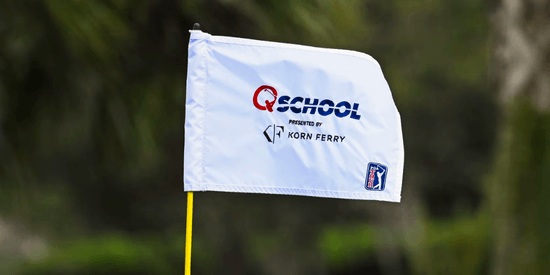
2025 PGA TOUR Q-School Guide: Sites, Scores, and Who Advanced
Dec 5, 2025Second Stage is complete and Final Stage awaits at Sawgrass — follow every Q-School leaderboard and the players still chasing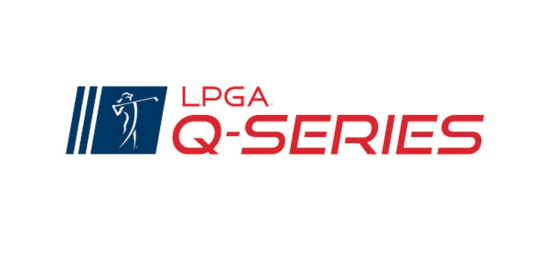
2025 LPGA TOUR Q-Series: Final Qualifying Stage FINAL SCORING
Dec 8, 2025Helen Briem earns medalist honors, 31 players headed to the LPGA next year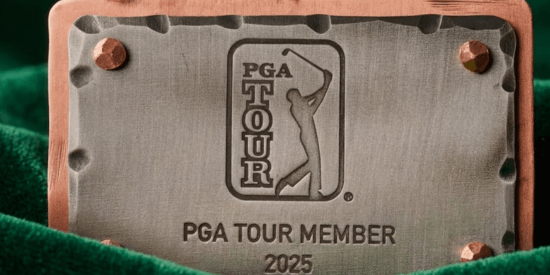
2025 PGA TOUR Q-School Final Stage: Ewart Leads Five New TOUR Card Winners
Dec 14, 2025A.J. Ewart topped Final Stage at TPC Sawgrass, leading five players who secured PGA TOUR membership for 2026.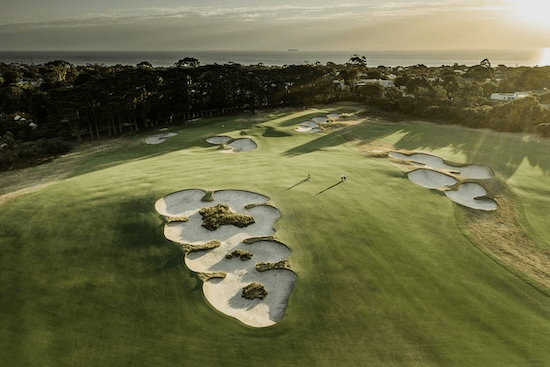
Australian Open at Royal Melbourne: Preview, amateur bios, and how to watch
Nov 30, 2025Rory McIlroy headlines one of the championship's top fields in years - at least four amateurs will have their chance at gloryInside Gil Hanse’s Restoration of Baltusrol’s Upper Course: A Return to Tillinghast’s
Dec 11, 2025Renowned architect Gil Hanse reveals how he brought Baltusrol’s Upper Course back to life by honoring A.W. Tillinghast’s originalLoading latest news...
